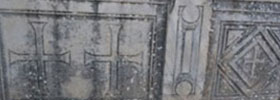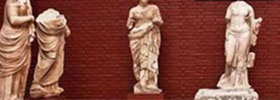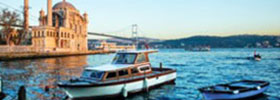Ephesus & Sirince Village Tour
Ephesus + Temple Of Artemis + Terrace Houses + Sirince Village
You will be met by your private guide. Drive to Ephesus is one of the best well-kept Greco- Roman ancient cities in the world, famous with Odeon which is known as concert hall and council of the city; Domitian Temple which is one of the first temples in the age dedicated for a human; Celcius Library which was the third biggest library in the ancient world; Amphitheatre where is one of the biggest amphitheatres in the world with 24.000 people capacity and where St. Paul preached; Roman Baths ; Fountains; Temples; Agora; Love House; Public Toilets; Terrace Houses which were the houses for rich people in Ephesus during Roman age famed with mosaics and frescos. After Ephesus, we visit Sirince Village where has a classical Turkish village life; famous with wine houses, olive oils, handcrafts, organic vegetables and fruits. After village, we will visit Temple of Artemis which is one of the seven wonders of Ancient time.
• Minimum required time for this tour is 5 hours.
• Terrace Houses are not recommended for disable people because of the steps.
• According to your request, we can skip some of the sights of above program.
• We are stationed in Ephesus / Kusadasi. Please get in touch for details of our tours in other cities/locations such as Istanbul and Izmir.
• Professional Licensed Local Tour Guide
• Luxury Air-Conditioned New Brand of Van
• Private Driver
• All Parking Fees
• %100 Satisfaction


For parties over 14 guests, please contact us.
Above prices are for parties, NOT FOR EACH PERSON.
You can easly fill the enquiry form from below button, then we will touch you as soon as possible with all the details of our private tours.
We DO NOT ask a pre-payment before the tour. You can pay all the fees at the end of the tour in EURO or EURO.
Please click here to book one of our tours.

 0090 543 254 01 43
0090 543 254 01 43 info@ephesusporttours.com
info@ephesusporttours.com Kusadasi, Turkey
Kusadasi, Turkey /ephesusporttours
/ephesusporttours













